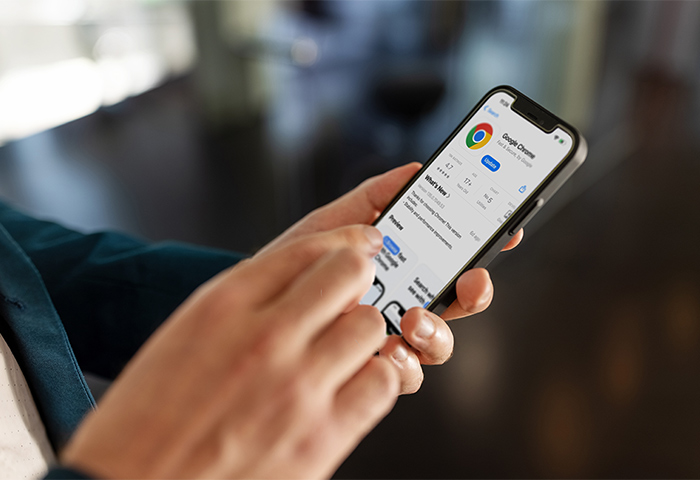How to block websites on Chrome using a browser extension
The best Chrome security extensions, built specifically for this purpose, should be able to block websites for you automatically and consistently. Usually, all you need to do is open the settings for the extension you want and look for a “block list” setting. Add the sites you want to block and hit save.
Some popular free Chrome extensions for blocking websites include BlockSite, StayFocusd, Freedom, and WasteNoTime. In the steps below, we’ll show you how to block Chrome websites using the browser extension BlockSite.
Here’s how to block sites using a Chrome extension:
-
Open the Chrome web store and search “block websites.” Choose an extension (in this example, we’ve chosen BlockSite) then click Add to Chrome to install.

-
Open the BlockSite extension in the top-right corner of your browser window and create an account. Then click Block sites in the left panel and enter the URL of the site you wish to block. Click Add Item.

You can also block a site using the extension while you’re browsing. While you’re on a specific website you want to block, open the extension and click Block this site in the pop-up window.
Block websites in Incognito mode
BlockSite also works in Google Chrome Incognito mode. Here’s how to turn the extension on when browsing privately:
-
Click the puzzle icon in the top right of your browser, then Manage extensions.
-
Go to BlockSite > Details.
-
Scroll to Site settings and toggle on Allow in Incognito.

How to block websites on Chrome without an extension
It’s possible to block websites on Google Chrome without the aid of an extension by changing settings in an administrator account. First, ensure that you’re using the Google admin account (you need a Google Workspace or Cloud Identity account). Then, follow the steps below to block a website on Google Chrome without an extension:
-
Go to admin.google.com (on any web browser) and open Devices > Chrome > Settings > Users & Browsers.
-
Select the user you want to block from accessing certain websites.
-
In the URL Blocking tab, enter the URL of the website you want to block and click Save.
If you don’t have access to the Google administrator account, you’ll need to block websites using an extension instead.
Block websites using parental controls
Another way to restrict certain websites without the need for extensions is via the parental controls feature offered on Windows devices. Parental controls are a handy tool, particularly when it comes to blocking sensitive or inappropriate content to keep your children safer online.
Parental controls can be set up on Windows by following these steps:
-
Open the Windows Start menu and navigate to Settings > Accounts.
-
Go to the Family tab on your Microsoft account page, select your child's account (or add a child account), and click Content filters.
-
Enter the URL or the domain name of the site you want to block. Click + to add more than one web address.
Block websites using Screen Time on Mac
You can also block websites on Mac by using the Screen Time feature:
-
Open the Apple menu and click System Settings.
-
Go to Screen Time, click Content & Privacy, and toggle it on.
-
Select Content Restrictions (sometimes called Store, Web, Siri & Game Center Content). In the Safari section, select Limit Adult Websites from the drop-down menu.
-
Click Customize then add the website URL you wish to block and click Done.
How to block websites on Chrome on mobile devices
You can block websites on Chrome with an iPhone via the Content Restrictions section of the Settings menu. Although Chrome is often the default browser on Android, you typically need to download an app to restrict website access.
On an iPhone
iOS users can easily block websites on Chrome by using the Screen Time feature. Here’s how to do it:
-
Open the iOS Settings app and go to Screen Time > Content & Privacy Restrictions. Toggle this to the “on” position.
-
Tap Content Restrictions > Web Content.
-
Select Limit Adult websites then tap Add Website under Never Allow. Finally, enter the URL of the site you want to block.

On an Android
Most Android devices do not come with a built-in setting to block specific websites, meaning the most effective way to do this is with a trustworthy, third-party Android app. BlockSite, for example, is available on Android and can perform the same functions as its desktop counterpart.
To use BlockSite on Android follow these steps:
-
Install BlockSite via the Google Play Store and follow the setup instructions. Ensure you allow the app access to your Android’s privacy settings.
-
Select the + Create button on the app start page.

-
Enter the URL of the website you want to block and tap Done.
The BlockSite App also allows you to block content based on keywords and categories, and you can temporarily hide Android apps, too.
How to block websites using a Wi-Fi router
It’s possible to block websites directly using your internet router. The biggest advantage of this method is that the settings apply to all connected devices automatically. While the steps may differ depending on your specific router, most routers have similarly customizable settings or let you set specific block-and-allow lists.
Here’s how to block a website using a router:
-
Type your router’s IP address into your Chrome search bar (often 192.168.0.1 or 192.168.1.1), then log in using the admin information from your router.

If you don’t know your router’s IP address, look for a label on the router. Alternatively, you can find the IP address using your computer:
-
On Windows: Open Command prompt, type ipconfig and press Enter.
-
On Mac: Open System Settings > Network > Wi-Fi. Click Details next to your connected network. The IP address will be in the TCP/IP tab.
-
Go to Security > Parental control and select the Templates tab.

-
Follow the instructions to block your chosen websites and click Apply.

How to block websites on Chrome using the hosts file
It’s possible to block websites on Chrome by editing the hosts file on Windows. The hosts file acts as an address book for your computer, containing the IP addresses and domain names of the websites you browse. You can add a website to the hosts file and set it to go nowhere, essentially blocking it.
To block websites using the hosts file, make sure you’re logged into the Windows admin account then follow these steps:
-
Open Notepad and select File > Open.
-
Search for C:\Windows\System32\drivers\etc then, in the bottom-right corner, change the file type to All Files (.*). Open the file called hosts.
-
On a new line at the bottom of the file, type 0.0.0.0 followed by a space then the URL of the website you wish to block.
It should look like this:
0.0.0.0 www.twitter.com

-
Save your changes, close Notepad, and restart your computer.
If done correctly the website will be blocked. You can add as many websites as you want, just make sure that each one is on a new line.
What happens when you block a website on Chrome?
Blocking a website on Chrome stops users from accessing the website completely. If a user attempts to access a website that’s set to be blocked on Google Chrome, they’ll see an error message—no matter if they searched for the web address manually or opened the site via a link.
Why should I block certain websites on Chrome?
There are many reasons why you might want to block a certain website on Chrome, whether permanently or temporarily. Here are a few common reasons to block a website on Chrome.
-
Child protection and safeguarding: Children with unrestricted internet access may come across unsuitable content, such as adult websites or content encouraging dangerous behaviors. Young and vulnerable people can also be more susceptible to social engineering or scams on Facebook and similar sites.
-
Malware security: Some unsafe websites contain malware, so blocking any URLs that seem suspicious can help protect your device.
-
Better focus: One of the most common reasons to restrict a website's usage is because it’s simply too distracting. Certain sites are designed to keep you engaged, which can make it harder to concentrate while studying, working, or doing whatever other task you should be doing instead.
Block malicious websites with AVG Secure Browser
Knowing how to block websites while you browse is an essential step in keeping yourself safe and focused online. But doing it manually can be a hassle. By using AVG Secure Browser, designed with strong online privacy in mind, alongside a browser extension to block distracting sites, you’ll get the best of both worlds.
AVG Secure Browser helps block your access to dangerous websites, blocks malicious downloads, and helps protect against phishing attacks you may come across online. Choose a browser that prioritizes safety and privacy. Download AVG Secure Browser today.
























